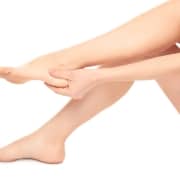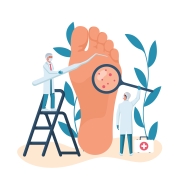Do I Have a Foot Corn or a Plantar Wart? How to Tell the Difference
It’s not entirely uncommon for people to confuse corns and plantar warts. They’re both common foot ailments and can cause pain or discomfort (especially when walking). Of course, if you treat a wart like a corn or vice versa, you can end up with more serious consequences than you were expecting. Here, we’ll look at how to tell the difference between the two and when you may need a podiatrist in Austin, TX to take action.
Appearance
Foot corns and plantar warts can both present as raised bumps that are either yellow or brown. The main difference is that plantar warts have a rougher surface than corns and can appear in purple, gray, pink, or even flesh-toned.
Causes
Corns are usually the result of spending a lot of time on the feet (especially in ill-fitting shoes). Plantar warts are caused by the human papillomavirus, which is usually contracted through cuts or other vulnerable parts of the skin.
Discomfort
You’ll undoubtedly feel pain or discomfort with both types of conditions, but a corn tends to be more localized. With plantar warts, you can end up feeling the pain across the foot.
Treatments
Both types of ailments can clear up on their own without any treatment whatsoever. If you need treatment for a corn, it could be as simple as switching shoes or purchasing a corn pad to cushion the area. With a plantar wart, though, the treatment options are usually more involved, and they can include anything from freezing the wart off to general immunotherapy to strengthen your healing capabilities.
Seeing a Podiatrist in Austin
While corns and plantar warts can both clear up on their own, it can take years before warts go away — if they go away. If you’ve tried over-the-counter treatments, like salicylic acids, you should know that these can only treat surface problems as opposed to the root cause. If you’re struggling with either corns or plantar warts in Austin, TX, it may be time to consult a professional. At Dr. Jeffrey Lamour, DPM, PA, you’ll get the services and care you need to get back on your feet.Do I Have a Foot Corn or a Plantar Wart? How to Tell the Difference







